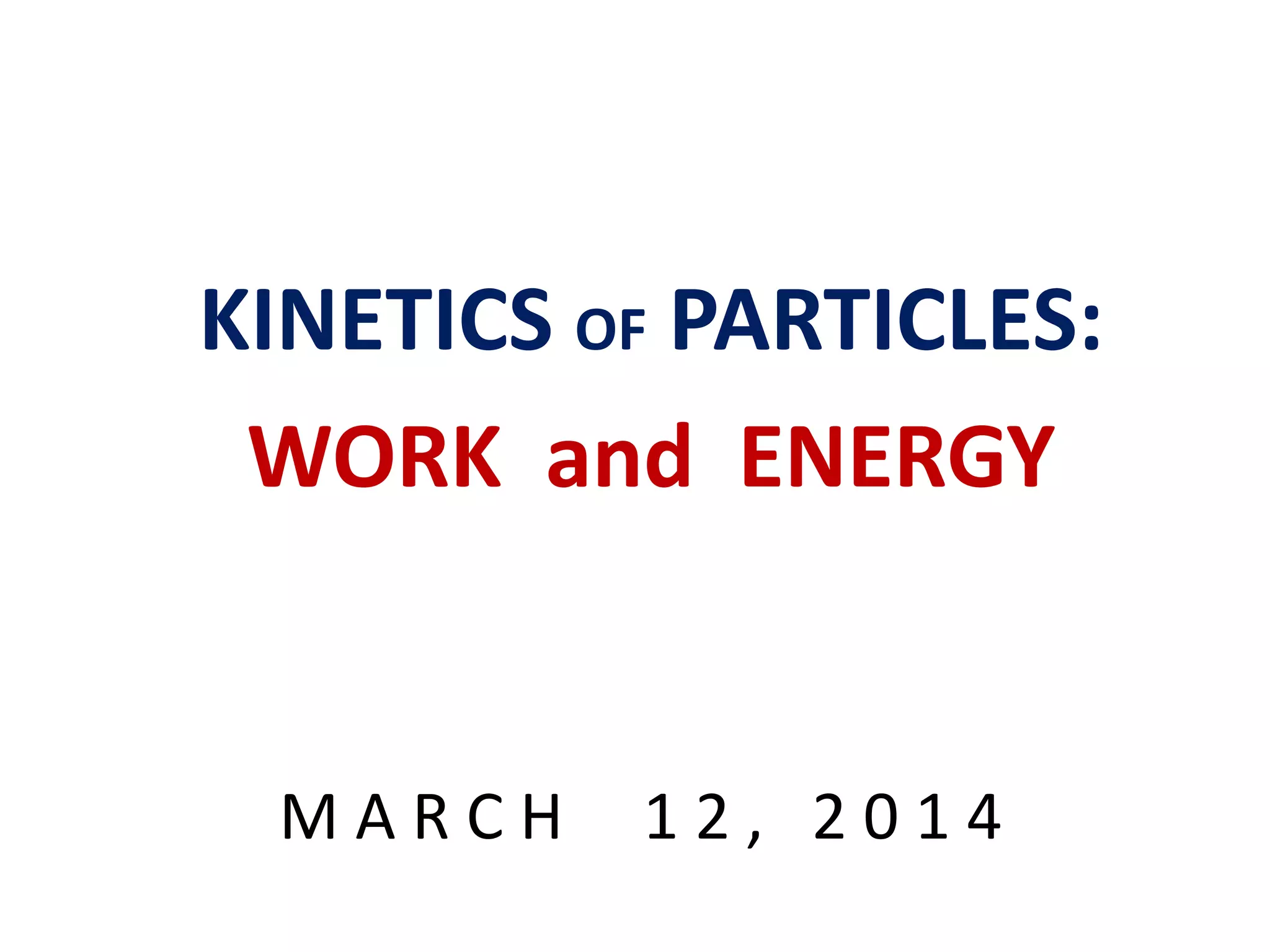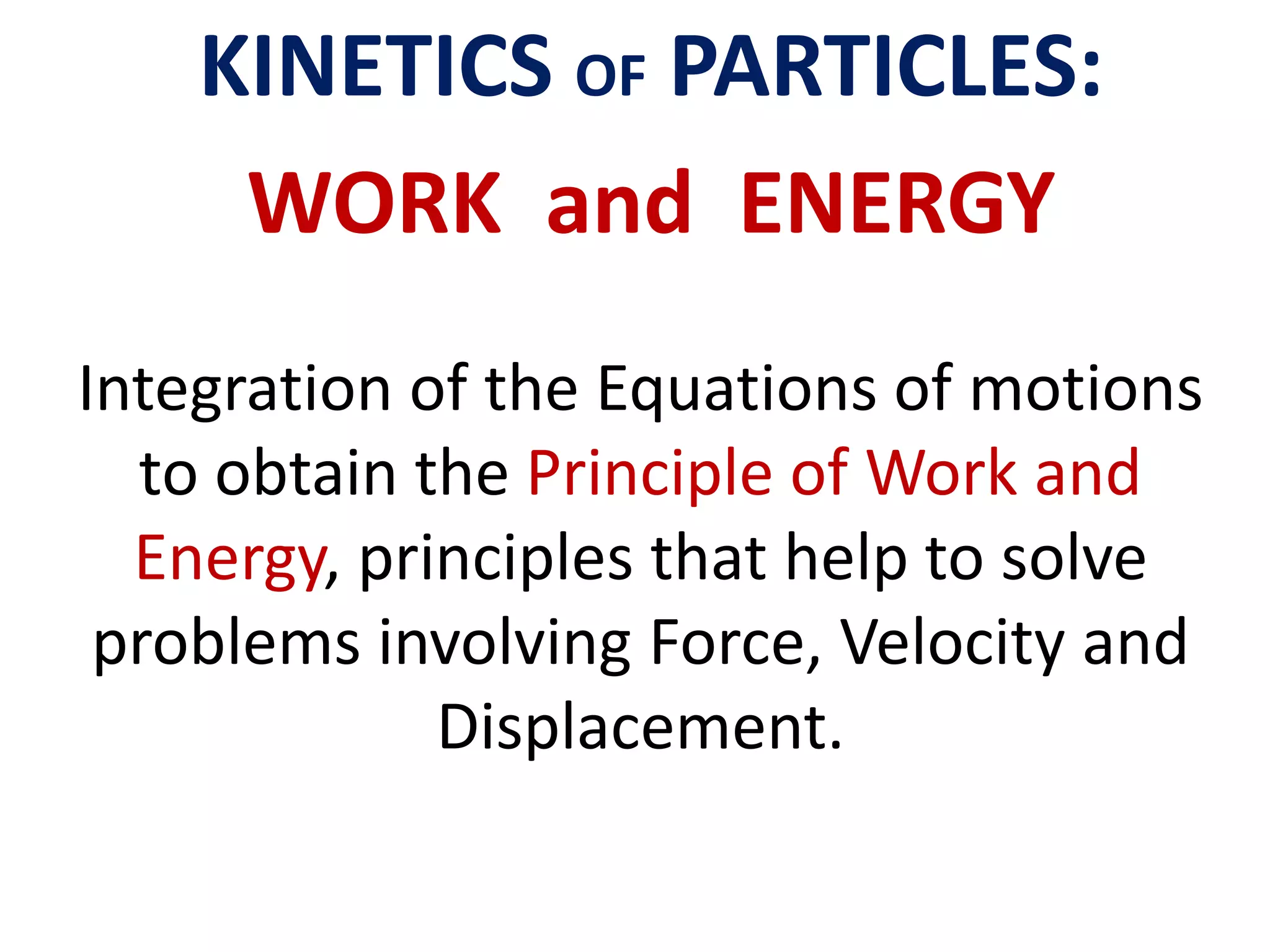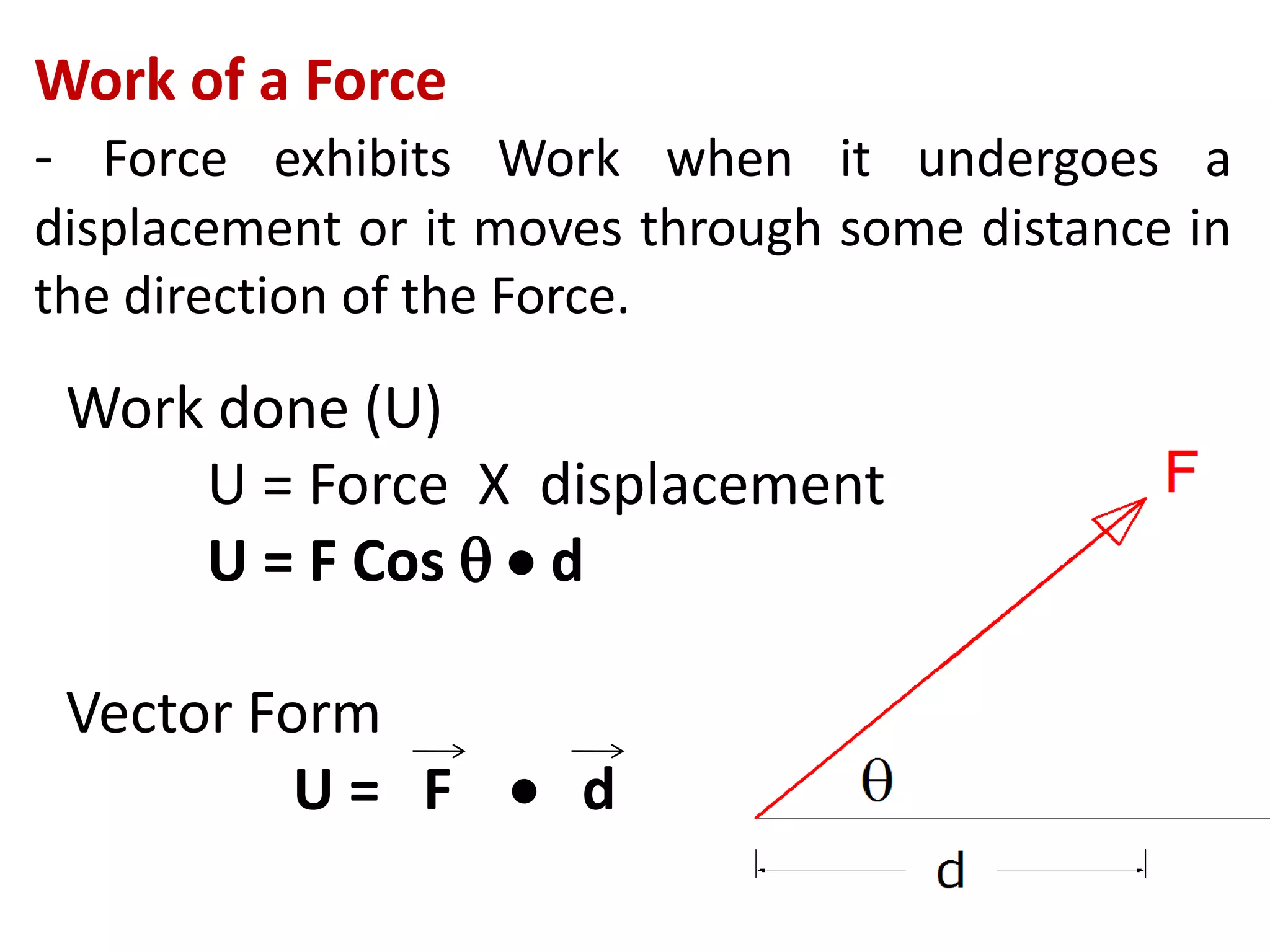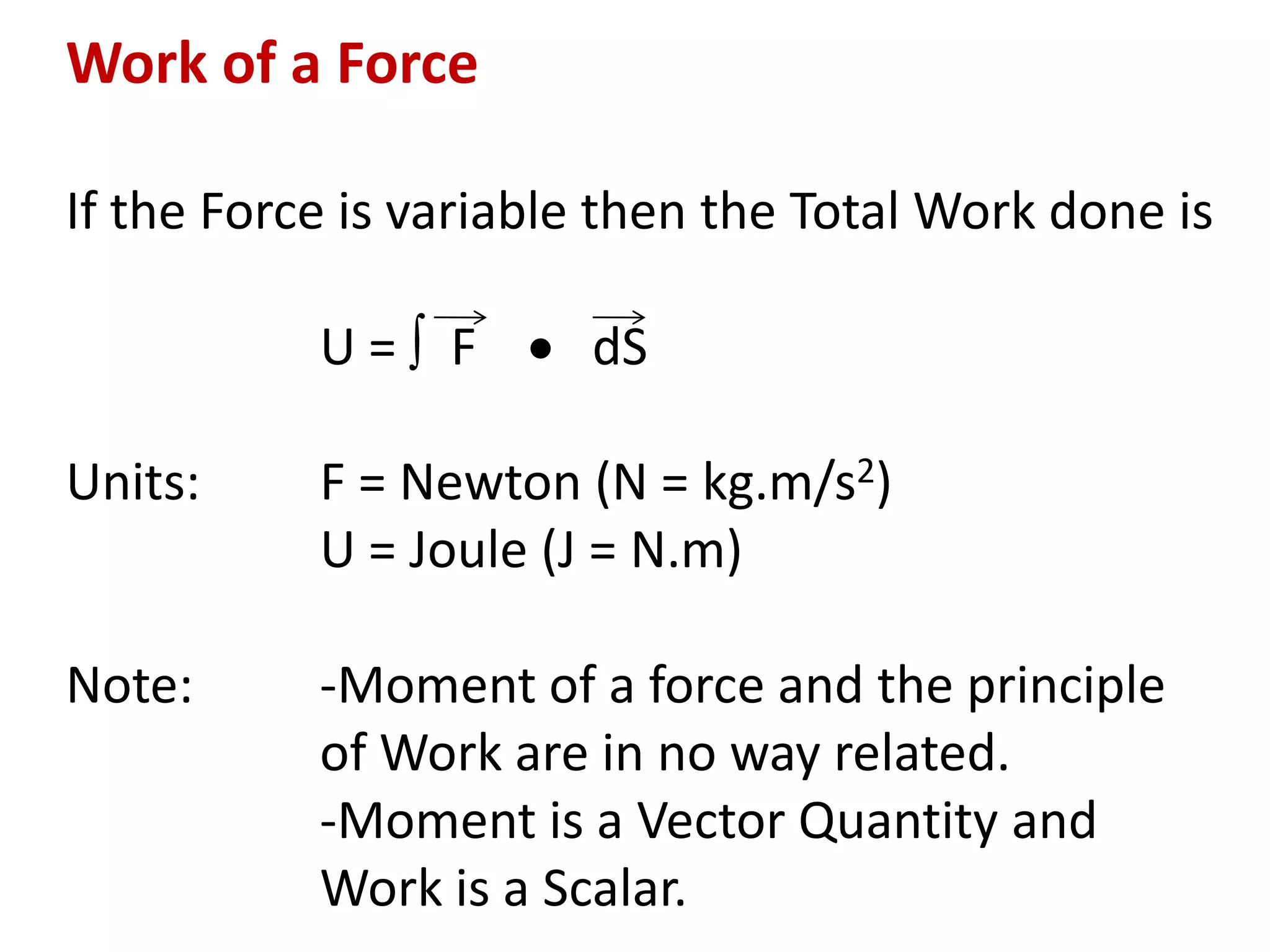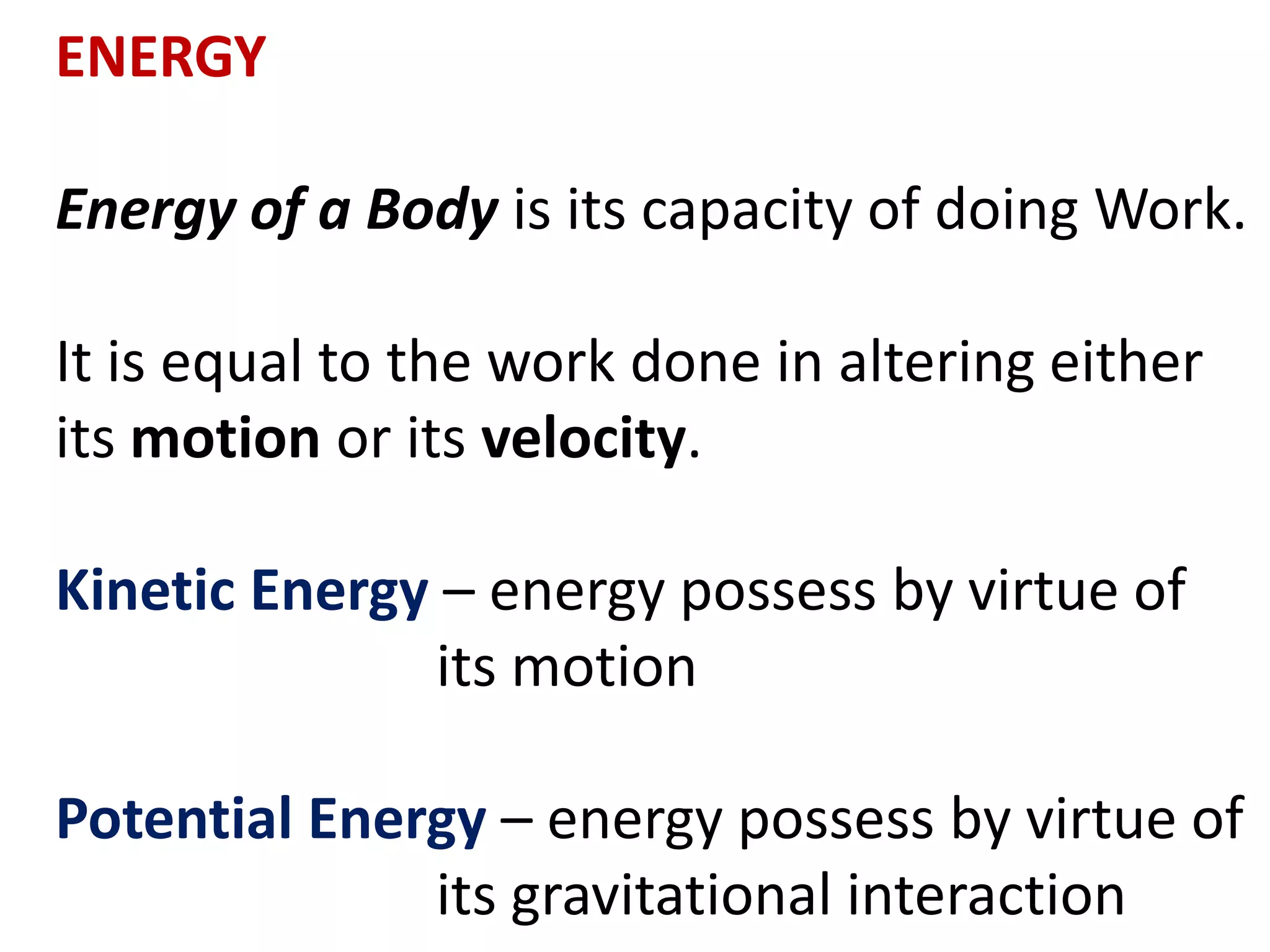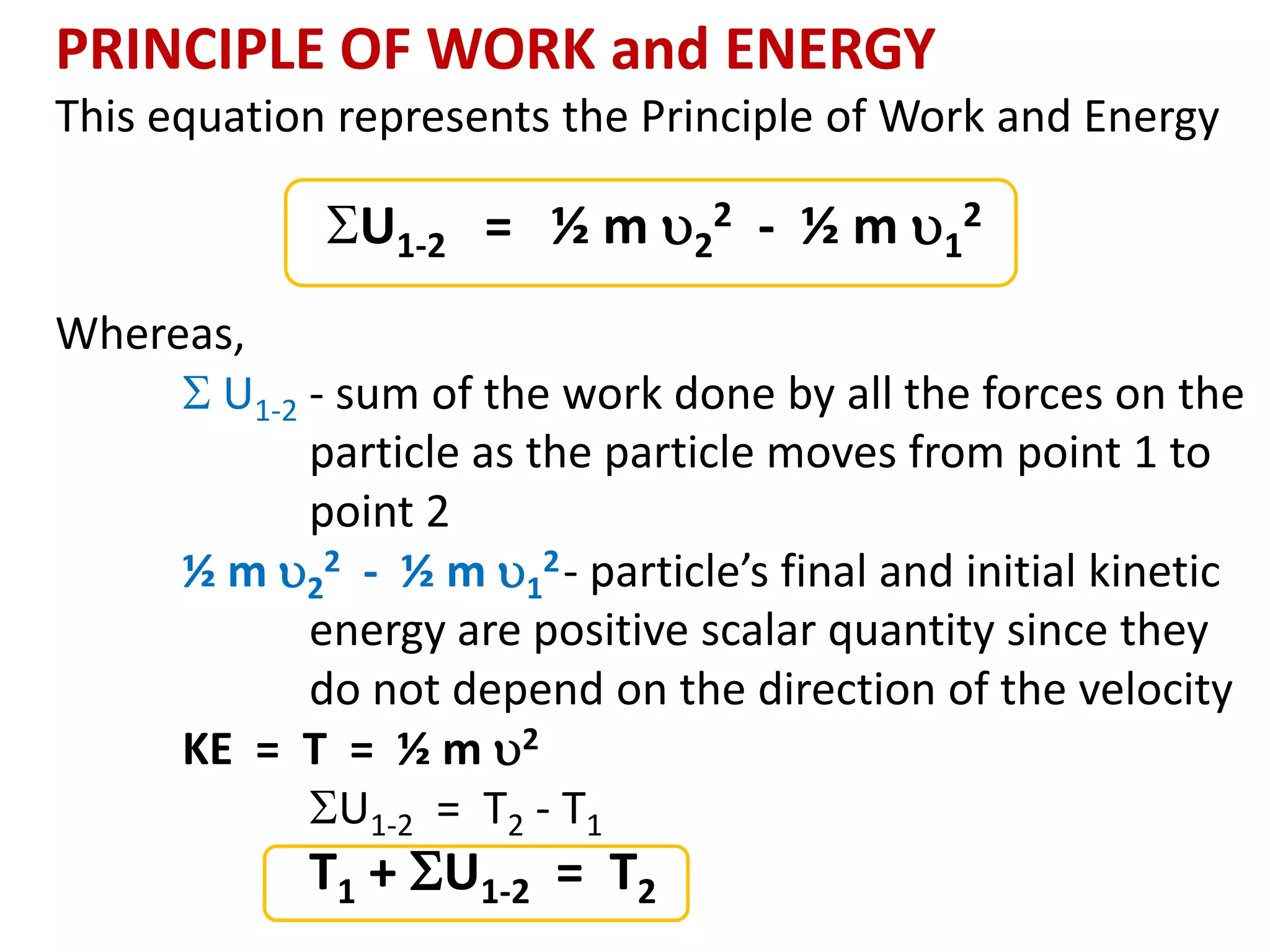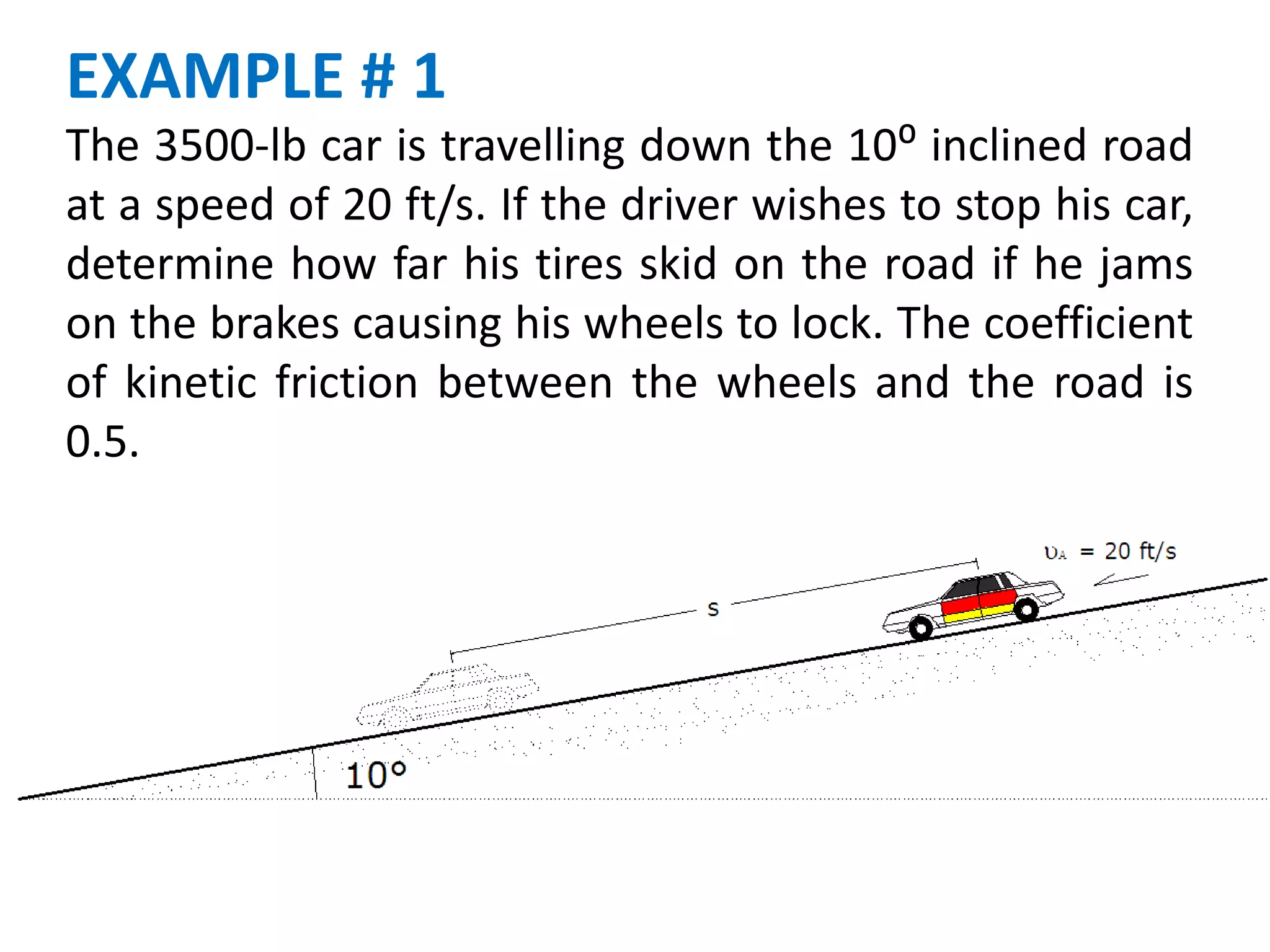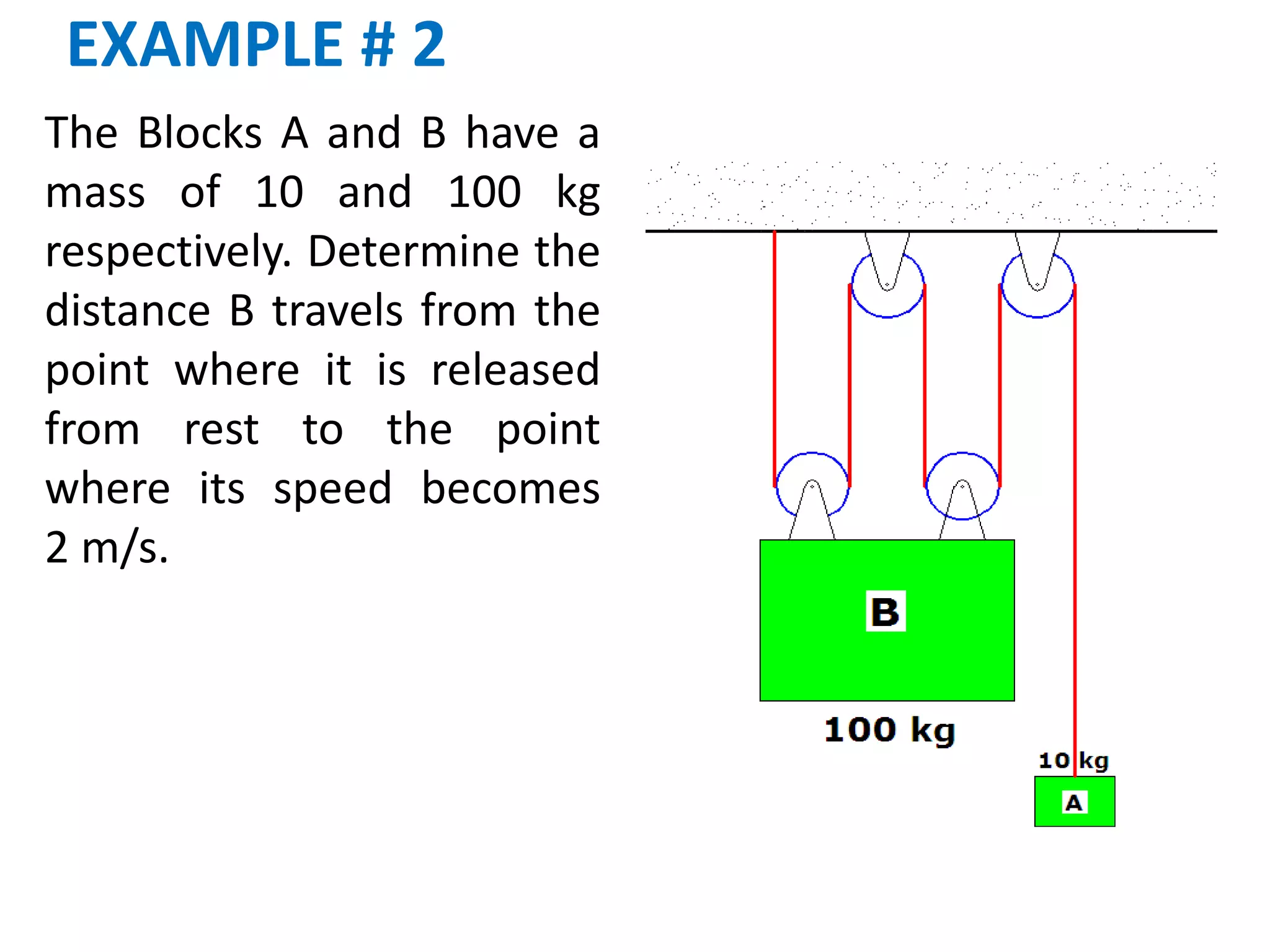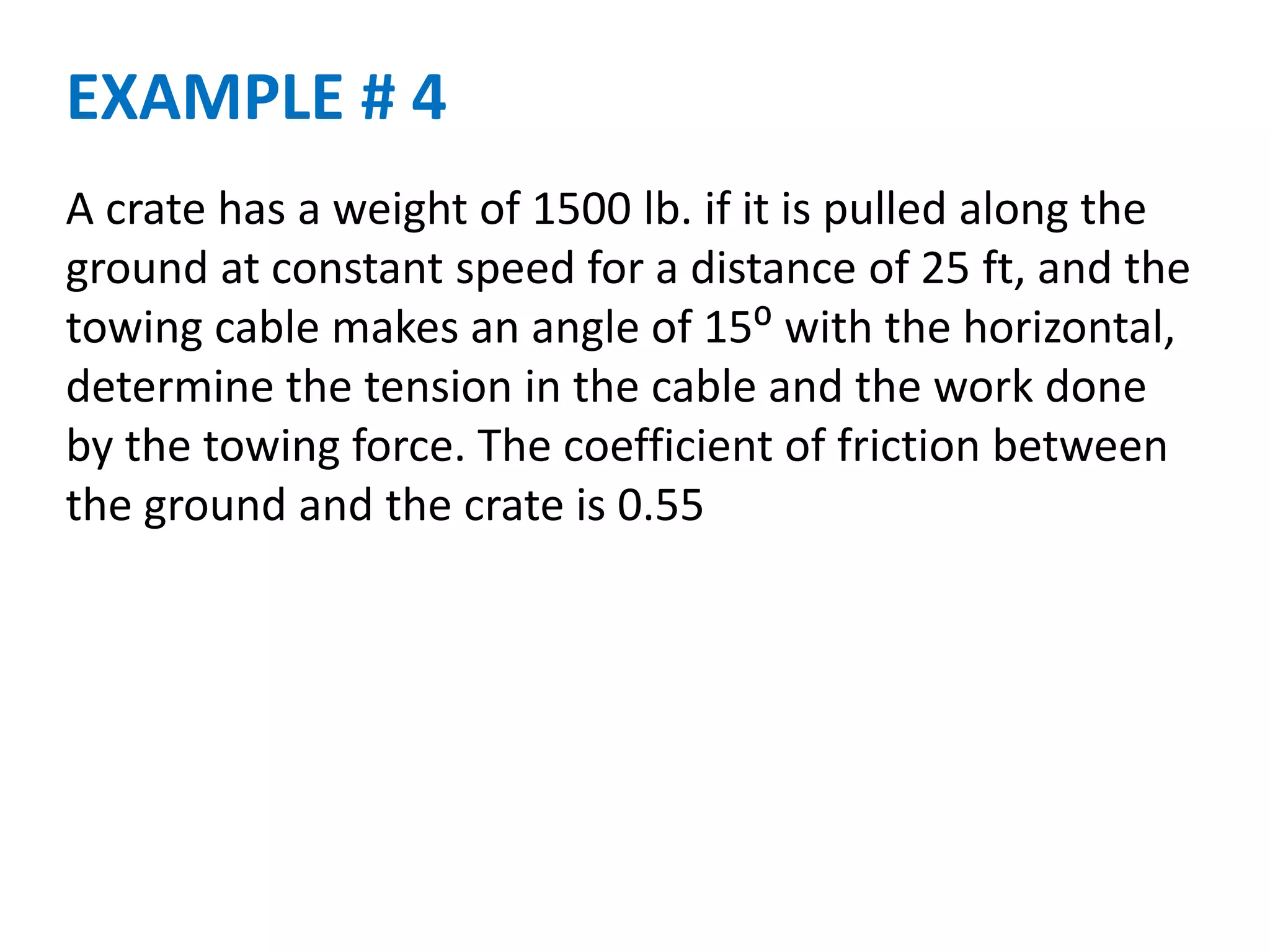This document discusses work, energy, and their application to solving kinetics problems involving forces, velocities, and displacements. It defines work as the product of force and displacement. It also defines kinetic energy as the energy of motion and potential energy as energy due to position or gravitational interaction. The principle of work and energy states that the net work done on an object equals its change in kinetic energy. Examples are provided to demonstrate how to apply these concepts to calculate velocities, distances, tensions, and work in problems involving forces on moving objects.
